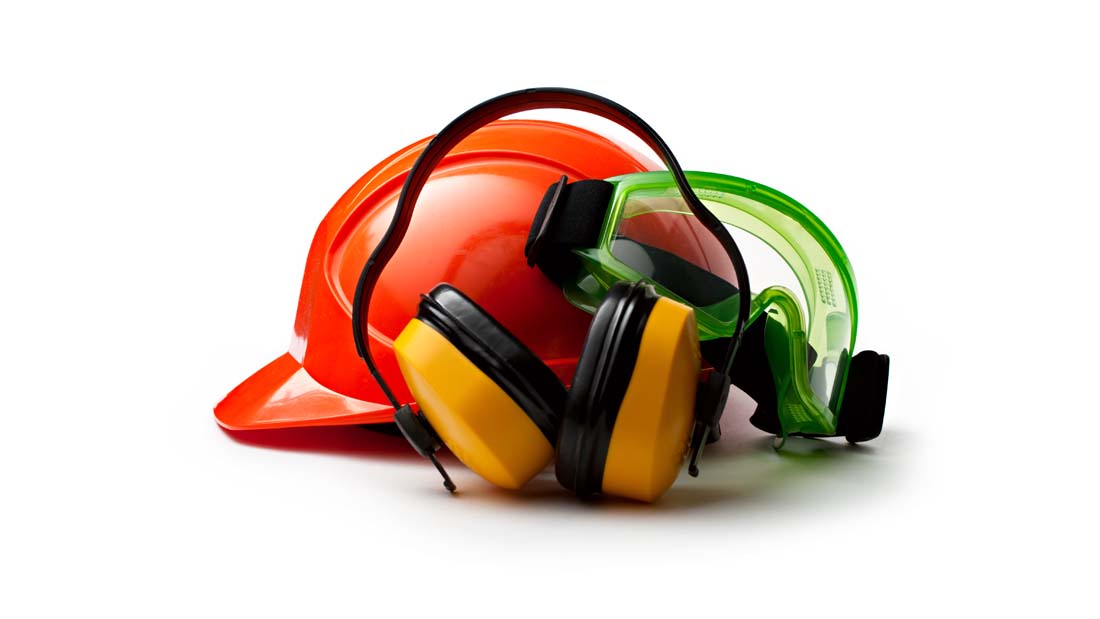
The workplace needs to be as safe a place as possible for those working in it. PPE exists to help safeguard the well-being and safety of workers, and is vital in terms of best practice and risk mitigation.
PPE includes items such as safety helmets, gloves, eye protection, high-visibility clothing, safety footwear and safety harnesses. It also includes respiratory protective equipment (RPE). PPE Should be regarded as a last resort to protect workers health and safety; engineering controls and safe systems of work should be considered and implemented first, and then PPE considered if there is still a risk of hazard. These hazards can affect:
- The lungs e.g. from breathing in contaminated air
- The head and feet e.g. from falling materials
- The eyes e.g. from falling particles or splashes from corrosive substances
- The skin e.g. from contact with corrosive substances or sensitisers
- The body e.g. from extremes of heat or cold
To make sure the correct type of PPE is chosen, it’s important to consider the different hazards in the workplace and identify the PPE that will provide adequate protection against them; this will differ from job to job in each industry.
One size doesn’t always fit all
Helping to ensure all workers are protected is what PPE was designed for. However, a ‘universal’ PPE will not fit everyone in the workplace. Even when PPE has been designed specifically for both males and females, employers must aim to accommodate differences in body types so it is essential that workers can try on more than one size and style in order to select the best fit for that individual.
It is typical to see many styles of PPE boots are designed with men in mind, so even having a smaller sized boot may not fit women properly; typically a woman’s foot is both shorter and narrower than a typical man’s foot so a smaller boot may be the right length but not right width. The same could apply to protective gloves, face masks/eyewear etc. as typically a woman’s face and hands tend to be slightly smaller than men. In regards to women wearing hard hats, if it is not a proper fit, a women’s vision may be obscured if it falls over her eyes. Many manufacturers advise women wear hard hats with chin straps to improve fit and reduce risk, however, this may not be a good solution as the strap could increase the risk of neck injury/strangulation if there is a risk of falling while working. Any chin strap should have a fall release catch as is found in climbers’ helmets.
If employees do not feel comfortable in their PPE they are less likely to wear it putting them at much greater risk of injury/harm.
Face Fitting and Facial Hair
RPE is a particular type of PPE designed to protect the wearer from breathing in harmful substances or from oxygen-deficient atmospheres when other controls are either not possible or insufficient on their own.
Where RPE is used, it is essential these are fitted correctly and don’t allow for any leaks. Problems may arise when facial hair is present as this can create a gap between the mask and the skin, which is a potential health risk for the employee. Even stubble can create gaps between the mask and face and create leaks of contaminated air around the edges of the mask and into the lungs. A tight-fitting facial mask may also be difficult to implement effectively if the employee suffers from a skin condition or a structural abnormality to the shape of their face. When situations like this arise however there are alternative loose-fitting masks that could be considered, such as battery powered or compressed air supplied RPE with loose fitting face pieces. It is vital that employees are instructed in the correct use of RPE where appropriate.
If your workplace could benefit from advice on what specific PPE requirements, get in touch with us today.
028 3044 0509
